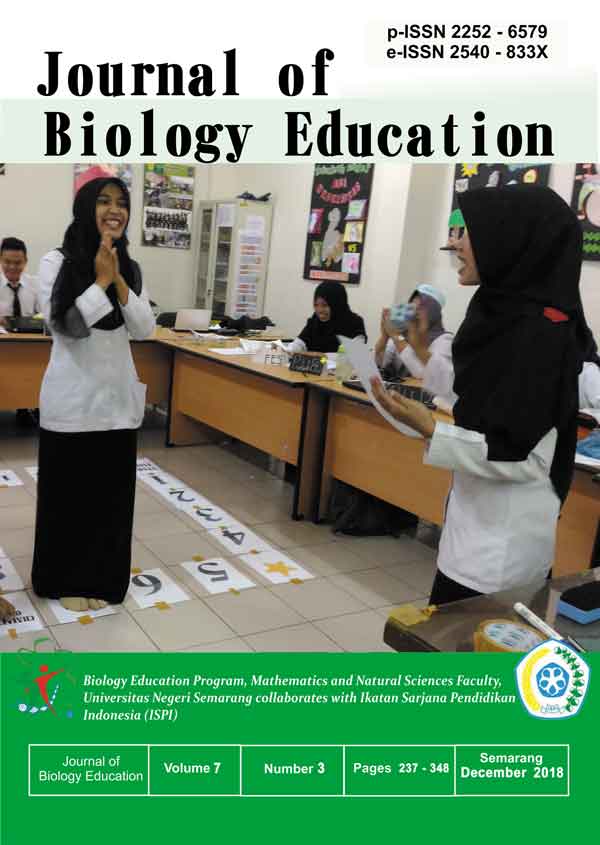The Effectiveness of Problem Based Learning Model in Environmental Changes Material Toward Learning Achievement of Senior High School
Abstract
Biology was a branch of Natural Sciences (IPA) that studies living things and life. Biology learning will be more meaningful when learning can be done outside the classroom. The results of observations conducted at Jakenan Senior High School, showed that biology learning activities more often use student textbooks. This causes students to be less active in expressing their opinions because they only listen to the teacher's explanation. One model that can be applied to the material of environmental change was the Problem Based Learning (PBL) model. This study aims to determine the effectiveness of PBL learning models on student learning outcomes and environmental care attitudes on material changes in the environment. The research population was used all students of class X Science at Jakenan Senior High School in the academic year 2017/2018. The research design used Quasi experimental with the Nonequivalent control group design. The sampling technique uses purposive. So that we got class X IPA 1 as the control of class and class X IPA 3 as the experimental of class. Cognitive learning outcomes were obtained from the pretest-posttest score. Scores of students' environmental care attitudes were obtained from the questionnaire scale of environmental care attitudes. While psychomotor learning outcomes were obtained from students' psychomotor assessment sheets. The results of the analysis of research data with t-test showed that learning outcomes and environmental care attitudes of students in the experimental of class differ significantly compared to the control of class. While the results of the n-gain test on cognitive learning results show the average value of n-gain in the experimental class was 0.68 higher than the control of class which was 0.48. The results of this study indicate that the application of the PBL model to the material of environmental change was effective towards learning outcomes and environmental care attitudes of high school students.
The copyright of the article once it is accepted for publication shall be assigned to the journal as the publisher. The intended copyright includes the right to publish the article in various forms (including reprints). The journal maintains the publishing rights to the published articles.
This work is licensed under a Creative Commons Attribution 4.0 International License.








